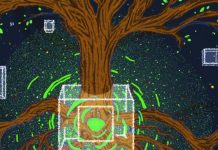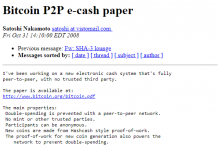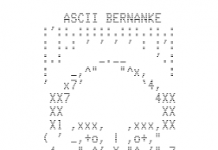Bitcoin and me (Hal Finney)
This story has been reproduced here, please visit source.
For those who don’t know me, I’m Hal Finney. I got my start in crypto working on an early version of PGP, working closely with Phil Zimmermann. When Phil decided to start PGP Corporation, I was one of the first hires. I would work on PGP until my retirement. At the same time, I got involved with the Cypherpunks. I ran the first cryptographically based anonymous remailer, among other activities.
Fast forward to late 2008 and the announcement of Bitcoin. I’ve noticed that cryptographic graybeards (I was in my mid 50’s) tend to get cynical. I was more idealistic; I have always loved crypto, the mystery and the paradox of it.
When Satoshi announced Bitcoin on the cryptography mailing list, he got a skeptical reception at best. Cryptographers have seen too many grand schemes by clueless noobs. They tend to have a knee jerk reaction.
I was more positive. I had long been interested in cryptographic payment schemes. Plus I was lucky enough to meet and extensively correspond with both Wei Dai and Nick Szabo, generally acknowledged to have created ideas that would be realized with Bitcoin. I had made an attempt to create my own proof of work based currency, called RPOW. So I found Bitcoin facinating.
When Satoshi announced the first release of the software, I grabbed it right away. I think I was the first person besides Satoshi to run bitcoin. I mined block 70-something, and I was the recipient of the first bitcoin transaction, when Satoshi sent ten coins to me as a test. I carried on an email conversation with Satoshi over the next few days, mostly me reporting bugs and him fixing them.
Today, Satoshi’s true identity has become a mystery. But at the time, I thought I was dealing with a young man of Japanese ancestry who was very smart and sincere. I’ve had the good fortune to know many brilliant people over the course of my life, so I recognize the signs.
After a few days, bitcoin was running pretty stably, so I left it running. Those were the days when difficulty was 1, and you could find blocks with a CPU, not even a GPU. I mined several blocks over the next days. But I turned it off because it made my computer run hot, and the fan noise bothered me. In retrospect, I wish I had kept it up longer, but on the other hand I was extraordinarily lucky to be there at the beginning. It’s one of those glass half full half empty things.
The next I heard of Bitcoin was late 2010, when I was surprised to find that it was not only still going, bitcoins actually had monetary value. I dusted off my old wallet, and was relieved to discover that my bitcoins were still there. As the price climbed up to real money, I transferred the coins into an offline wallet, where hopefully they’ll be worth something to my heirs.
Speaking of heirs, I got a surprise in 2009, when I was suddenly diagnosed with a fatal disease. I was in the best shape of my life at the start of that year, I’d lost a lot of weight and taken up distance running. I’d run several half marathons, and I was starting to train for a full marathon. I worked my way up to 20+ mile runs, and I thought I was all set. That’s when everything went wrong.
My body began to fail. I slurred my speech, lost strength in my hands, and my legs were slow to recover. In August, 2009, I was given the diagnosis of ALS, also called Lou Gehrig’s disease, after the famous baseball player who got it.
ALS is a disease that kills moter neurons, which carry signals from the brain to the muscles. It causes first weakness, then gradually increasing paralysis. It is usually fatal in 2 to 5 years. My symptoms were mild at first and I continued to work, but fatigue and voice problems forced me to retire in early 2011. Since then the disease has continued its inexorable progression.
Today, I am essentially paralyzed. I am fed through a tube, and my breathing is assisted through another tube. I operate the computer using a commercial eyetracker system. It also has a speech synthesizer, so this is my voice now. I spend all day in my power wheelchair. I worked up an interface using an arduino so that I can adjust my wheelchair’s position using my eyes.
It has been an adjustment, but my life is not too bad. I can still read, listen to music, and watch TV and movies. I recently discovered that I can even write code. It’s very slow, probably 50 times slower than I was before. But I still love programming and it gives me goals. Currently I’m working on something Mike Hearn suggested, using the security features of modern processors, designed to support “Trusted Computing”, to harden Bitcoin wallets. It’s almost ready to release. I just have to do the documentation.
And of course the price gyrations of bitcoins are entertaining to me. I have skin in the game. But I came by my bitcoins through luck, with little credit to me. I lived through the crash of 2011. So I’ve seen it before. Easy come, easy go.
That’s my story. I’m pretty lucky overall. Even with the ALS, my life is very satisfying. But my life expectancy is limited. Those discussions about inheriting your bitcoins are of more than academic interest. My bitcoins are stored in our safe deposit box, and my son and daughter are tech savvy. I think they’re safe enough. I’m comfortable with my legacy.
A mere week after hundreds of thousands of bitcoiners learned that they had been goxxed for one last time, Bitcoin’s revered mysterious creator Satoshi Nakamoto has been doxxed. It was revealed that he has been hiding in plain sight as, well…Satoshi Nakamoto, a Japanese American living in California.
Leah McGrath Goodman, a Newsweek journalist (you know, the magazine that discontinued its print edition because it was so terrible), published the story this morning following a two month investigation of Nakamoto and his family.
Let’s not take anything away from Goodman’s abilities to hunt down Satoshi and finally connect the dots. Many have tried and failed. Many theories have been floated and dismissed. Her story about Satoshi is important and revealing: he is a real single person, a recluse living a humble life despite his riches and fame, and a man with decades of experience working on classified technical projects with the government and defense departments. (Put on your tinfoil hats!)
But Satoshi can now also add endangered geriatric to his descriptors, thanks entirely to Goodman’s irresponsible reporting. I don’t see why Goodman felt the need to reveal specifics about Satoshi’s identity such as his “silver Toyota Corolla CE” or “modest, single-family home” in San Bernadino. Ånd don’t get me started on the Newsweek editors; they are guilty of journalistic malpractice for releasing a picture of Satoshi. It might as well have included a bullseye.
Goodman took her victory lap on CNBC this morning (the first of many I’m sure), and from her cheek to cheek smile, appears satisfied to have put in danger a man who went to great lengths to preserve his anonymity and humble life. One of Goodman’s statements is particularly revealing: “It seemed ludicrous that the man credited with inventing Bitcoin…would retreat to Los Angeles’s San Bernardino foothills, hole up in the family home.” As if she thinks that such a modest lifestyle is unbefitting anyone who comes into such a vast amount of wealth. Perhaps she should meet Warren Buffett.





















